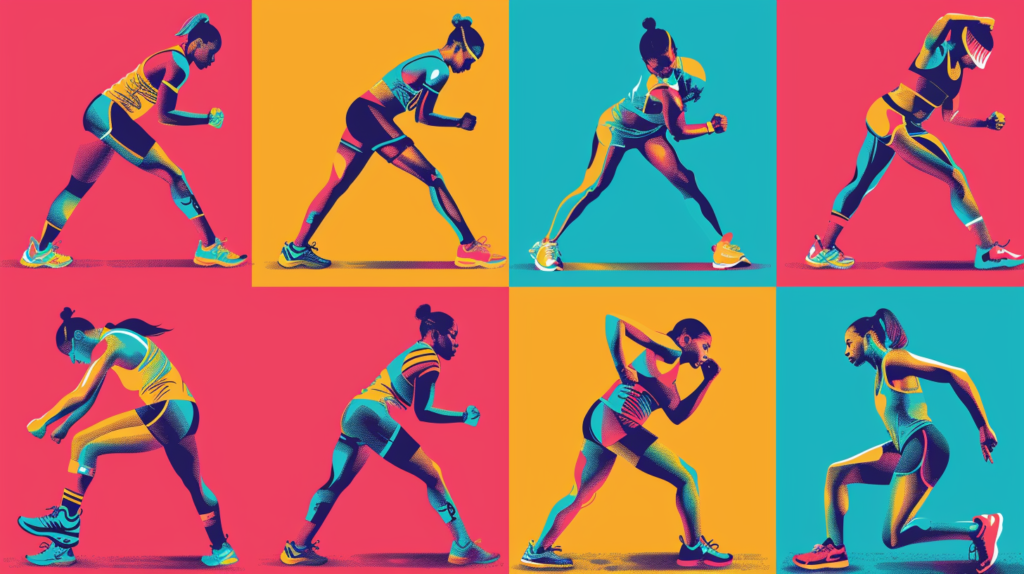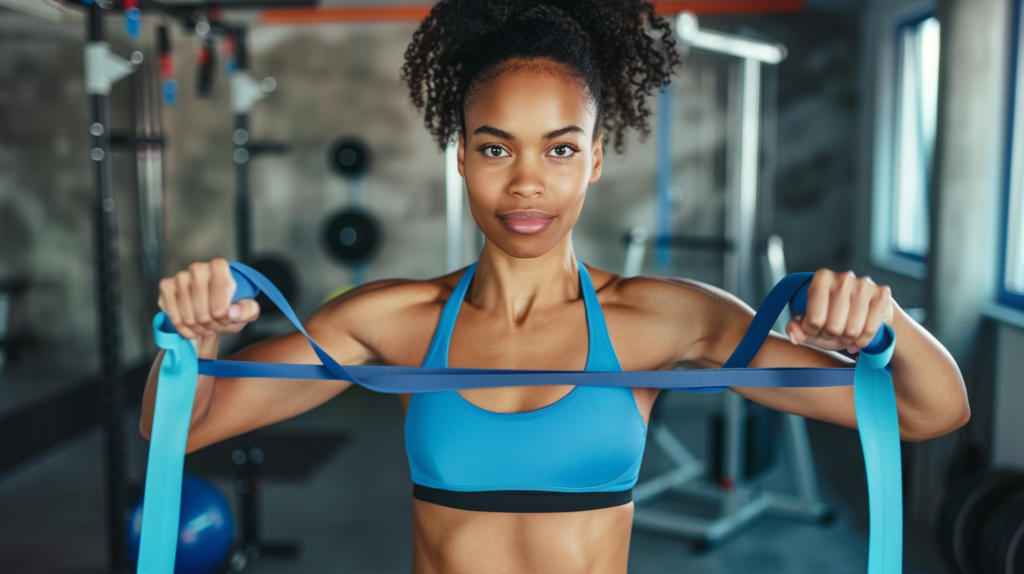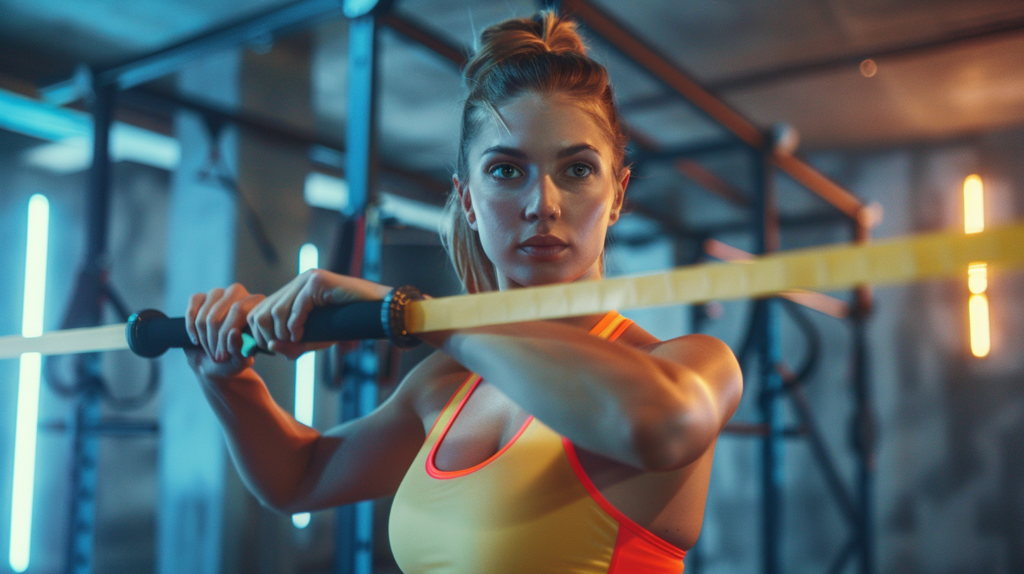Embark on your fitness journey with the top 5 low-intensity strength training routines for beginners, starting with “F” for a foundational approach to a stronger, healthier you.
Let’s kickstart our fitness journey with the 5 best low-intensity strength training routines for beginners: Bodyweight Circuit Training for balance and stability, Resistance Band Workouts to target specific muscle groups, Yoga for Strength to enhance flexibility and mental resilience, Pilates for Beginners to improve core strength, and Dumbbell Basics for a versatile strength tool. These routines help us establish a strong foundation and achieve well-rounded physical development. Each workout offers unique benefits, ensuring a tailored approach to our fitness goals. Let’s discover the right routines to ignite our progress and pave the way for a stronger, healthier self.
Key Takeaways
- Bodyweight Circuit Training: Enhances strength with no equipment.
- Resistance Band Workouts: Versatile strength training with precision.
- Yoga for Strength: Improves strength and flexibility with breathing.
- Pilates for Beginners: Builds core strength and body awareness.
- Dumbbell Basics: Versatile tool for muscle building and strength.
Bodyweight Circuit Training

Let’s kickstart our fitness journey with Bodyweight Circuit Training, a dynamic and effective workout routine that requires no equipment. This form of training not only helps in building strength but also enhances our balance challenges and core stability. By engaging in bodyweight exercises like squats, push-ups, planks, and lunges, we aren’t only working on our muscles but also improving our overall coordination and stability.
When we focus on balance challenges during Bodyweight Circuit Training, we’re training our bodies to stabilize and control movements effectively. This is important for daily activities and sports performance. The variety of exercises involved in this routine keeps our muscles engaged in different ways, promoting a well-rounded physical development.
Additionally, core stability plays an important role in supporting our spine and improving posture. Bodyweight Circuit Training targets various muscle groups, including those in the core, which helps in strengthening the abdominal muscles, obliques, and lower back. A strong core is essential for preventing injuries and enhancing athletic performance in other activities.
Incorporating Bodyweight Circuit Training into our fitness regimen not only provides us with a convenient and equipment-free workout option but also helps us develop a strong foundation of strength, balance, and stability. Let’s embrace this empowering workout routine and witness the positive changes it brings to our overall well-being.
Resistance Band Workouts

Starting Resistance Band Workouts introduces a versatile and effective way to enhance our strength training routine, offering a dynamic challenge that complements our bodyweight circuit training progress. Resistance bands provide numerous benefits, including improved strength, flexibility, and muscle tone. They’re portable, affordable, and adaptable to various fitness levels, making them an ideal choice for beginners looking to build muscle and increase endurance.
To maximize the benefits of resistance band workouts, it’s essential to focus on proper form techniques. Guarantee that the bands are securely anchored before starting any exercise to prevent injury. When performing exercises such as bicep curls or lateral raises, maintain proper posture, engage the core, and move through the full range of motion for optimum results.
One of the key advantages of resistance bands is the ability to target specific muscle groups with precision. By adjusting the tension of the bands or changing your body positioning, you can increase or decrease the level of resistance, allowing for a customizable workout tailored to your individual needs.
Incorporating resistance band workouts into your routine can help break through plateaus, prevent boredom, and add variety to your strength training regimen. With dedication and consistency, you’ll soon experience the empowering transformation that comes from challenging your body in new and exciting ways.
Yoga for Strength

Starting on a journey to improve our strength and flexibility, integrating yoga into our routine can offer a holistic approach to physical fitness and mental well-being. Yoga isn’t just about flexibility; it also builds strength through various poses that require muscle activation and core engagement.
Incorporating breathing techniques into our yoga practice can help us enhance our focus, reduce stress, and increase our body’s oxygen flow, aiding in strength development. Balance poses like Tree Pose and Warrior III challenge our stability and work our muscles in a unique way, contributing to overall strength improvement. These poses also require core engagement, helping us build a strong and stable center.
As we flow through different yoga sequences, we not only enhance our physical strength but also cultivate mental resilience and inner peace. The mind-body connection that yoga fosters can empower us to overcome challenges both on and off the mat, promoting a sense of liberation and well-being.
Pilates for Beginners

Beginning a voyage into the world of strength and flexibility, Pilates offers a dynamic and effective workout tailored for beginners seeking to enhance their physical fitness. Pilates benefits are vast, including improved core strength, flexibility, posture, and overall body awareness. This low-impact exercise method focuses on controlled movements, breathing techniques, and precise alignment, making it ideal for individuals of all fitness levels.
One of the remarkable aspects of Pilates is that it can be done with minimal Pilates equipment. While some advanced practitioners may use specialized machines like the Reformer or Cadillac, beginners can start with just a mat. This makes Pilates accessible and convenient, allowing individuals to practice at home or in a studio without the need for expensive gear.
By engaging in Pilates for beginners, you’ll find yourself gradually building strength and endurance while toning your muscles. The beauty of Pilates lies in its adaptability – exercises can be modified to suit different fitness levels and body types. As you progress in your Pilates journey, you’ll notice increased flexibility, improved balance, and a stronger mind-body connection.
Incorporating Pilates into your fitness routine can lead to a more balanced and aligned body, helping you move with ease and grace in your daily activities. So, grab your mat, breathe deeply, and set out on this empowering journey towards a healthier, more vibrant you.
Dumbbell Basics

Let’s explore the fundamental principles of incorporating dumbbells into your strength training routine. Dumbbells are versatile tools that can help you build muscle, increase strength, and improve your overall fitness level.
When starting with dumbbell exercises, it’s important to focus on proper form and select the appropriate weight for your current strength level. Here are some essential tips to get you started:
- Proper Form: Before adding any weight, make sure you understand the correct form for each exercise. This won’t only prevent injuries but also maximize the effectiveness of your workout.
- Weight Selection: Start with lighter weights to master the movements and gradually increase the weight as you gain strength. Choosing the right weight is vital for challenging your muscles without straining them.
- Warm-Up: Begin your session with a thorough warm-up to prepare your muscles for the upcoming workout. This can include light cardio, dynamic stretches, and mobility exercises.
- Progression: Track your progress by increasing the weight or the number of repetitions over time. Progression is key to continuous improvement and avoiding plateaus in your fitness journey.
Incorporating dumbbells into your routine can bring about significant improvements in your strength and overall fitness. Remember, consistency and proper technique are key to achieving your goals safely and effectively.
Frequently Asked Questions
Can Low-Intensity Strength Training Routines Help With Weight Loss?
Yes, low-intensity strength training routines can aid in weight loss. We’ve discovered that through combined efforts with nutrition tips and consistent workouts, we’ve achieved progress. Consistency is key to seeing benefits in weight loss goals.
How Often Should Beginners Do These Exercises per Week?
Feeling the burn of potential, we recommend aiming for 3-4 sessions weekly for best benefits like increased strength and endurance. With consistent effort, watch your progress soar and revel in the results!
Is It Necessary to Warm up Before Starting These Routines?
Yes, warming up is essential before starting any workout. It enhances blood flow, flexibility, and prevents injuries. Benefits include improved performance and reduced muscle soreness. Drawbacks of skipping warm-ups can lead to muscle strains. Effective alternatives include dynamic stretches and light cardio.
Are These Routines Suitable for Individuals With Joint Issues?
When addressing joint issues, modifications and low-impact alternatives are key. By prioritizing injury prevention and mastering proper form techniques, we can sculpt strength safely. Embrace the challenge; your body deserves care and empowerment.
Can These Exercises Be Modified for Older Adults or Seniors?
Exercise adaptations are essential for senior modifications. It’s crucial to make age-appropriate modifications for senior fitness. By customizing routines, we guarantee safety and effectiveness for older adults. Let’s embrace senior fitness with tailored workouts!
Conclusion
To sum up, incorporating low-intensity strength training into your fitness routine can help you build a solid foundation and improve overall strength. Whether you choose bodyweight circuits, resistance bands, yoga, Pilates, or dumbbells, these routines are perfect for beginners looking to start their strength training journey.
Remember, consistency is key, so stick with it and you’ll see progress in no time. Stay committed, stay strong, and enjoy the benefits of a stronger, healthier body.













